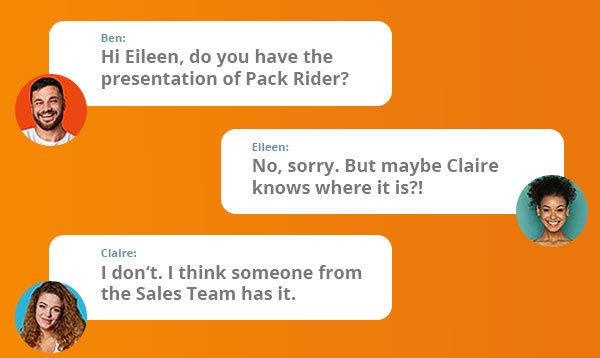Creative requests: What they are and how to process submissions
| October 21, 2020

In busy marketing departments, creative requests are welcomed and consistent. However, when and how often inquiries are directed at graphic designers, copywriters and tech employees can seriously affect productivity. Whether an image for a blog post or campaign launch, how a business processes creative requests has a direct impact on productivity. Here we look at the most common forms of creative requests, and how best to assign and process.
What are creative requests and how are they received?
Essentially they are sent by team members looking to receive digital assets like brand logos, images or illustrations for projects. If a team is collaborating on a creative project, a content request is inevitable. But when there’s no process in place creative requests are often given verbally, on a chat app or via emails. This information is easily forgotten or misplaced.

Sudden requests for logos, images and videos leave teams dizzy from a constant need to prioritize. If there’s no system in place then assets are often left unattended. Turning creative requests into effective processes can begin to feel like an unobtainable goal.
Creative requests cause workplace disruption
An example of workplace disruption can be seen when launching social media campaigns. The need for brand visuals, imagery and video often comes with daily deadlines. Responses from media managers are then expected to be just as agile as social media posts. But this can be disruptive for lead designers and content teams in fast-paced marketing departments, especially when inundated with requests from multiple sources.

Filling up email chains or Slack channels with requests often leads to unnecessary confusion and lost time. In the fast-paced world of marketing, it’s important to have established processes when handling dozens, if not hundreds, of monthly requests for creative assets.
Brief before any request submissions
A creative brief kickstarts a team project. It’s a two-way (minimal) process that allows teams to outline what it is they want to achieve creatively. This is different from a template submission (something we’ll look at momentarily), but still requires a detailed outline that includes staple information like timeframes, stakeholders and specific assets.
Briefing sessions also include project ideas, ambitions and design notes that can then be defined and attributed among a team. A briefing session is a place to share, discuss and establish clear goals before requests are made in the form of a template request.
A template request submission helps deliver assets on time
Creative templates allow teams to manage requests and gather feedback in one place. Whether design graphics for a website launch, copy for the latest newsletter or digital motion footage, an established template submission process allows timelines to be established, and priority given to shifting demands. It also helps with consistency about specific and necessary departmental considerations.
Templates ensure the correct information is obtained and clear expectations are established when creatives request key assets. Workflow software tools like Asana help streamline project management and turn creative requests into assigned tasks. The result is reflected in the number of deliverables. The ability to receive and review creative requests before approval gives time to prioritize.

If handled and processed correctly, creative requests reflect a thriving team pushing to achieve excellent results. But if there isn’t an established process in place and a structured approach to submission, requests slow people down. Ensuring teams understand the process ensures a smoother workflow and streamlines tasks. Establish a submission request system that ensures creative requests are not left unattended, and staff overwhelmed.

